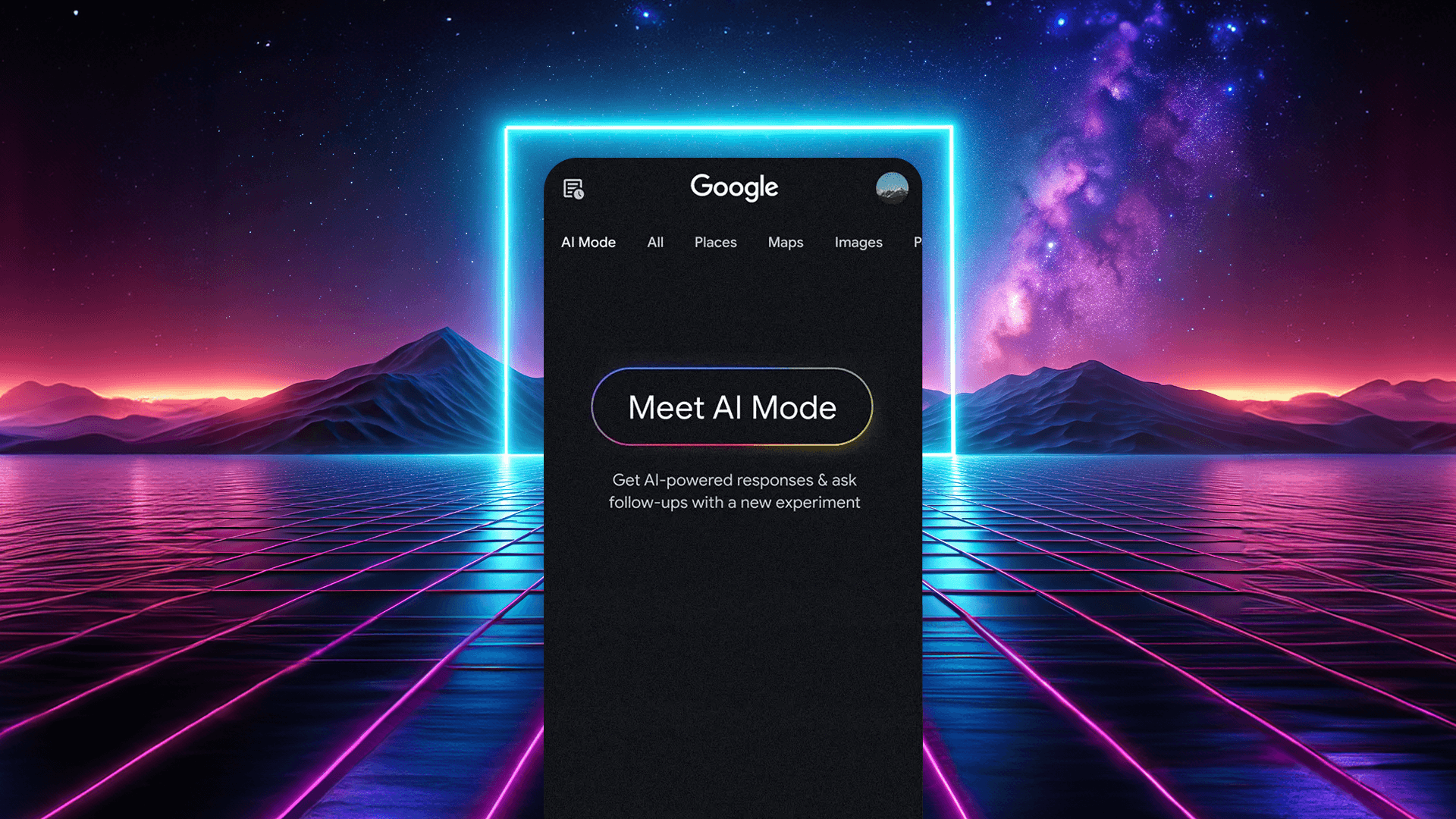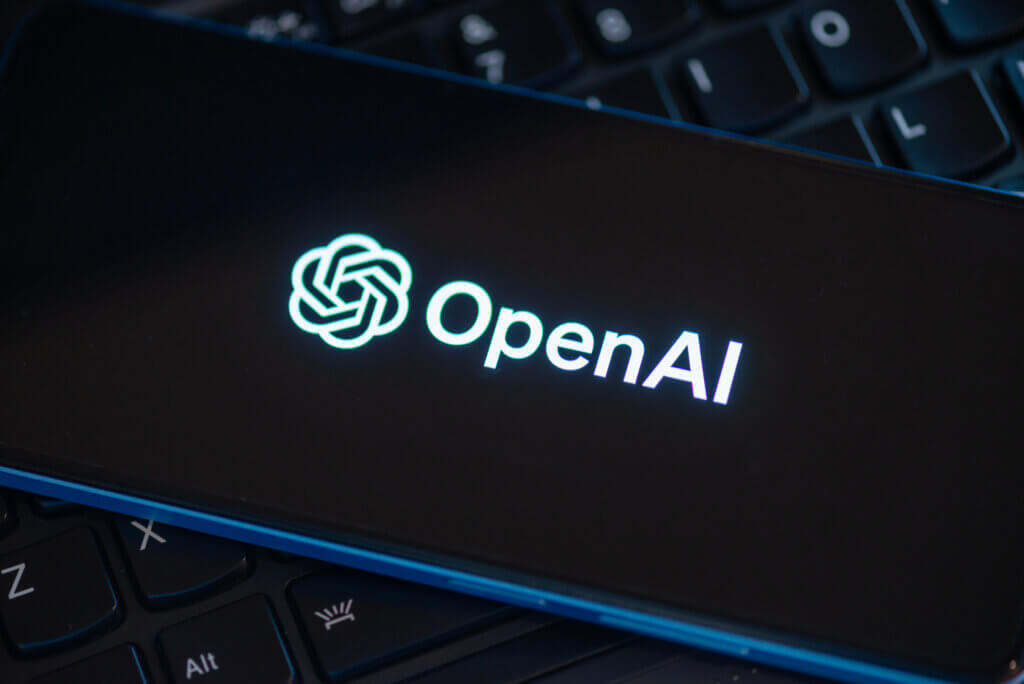Google just changed the rules of search. Again.
With the rollout of AI Mode in Google’s Search Labs, the traditional search experience is being blended into something more interactive, conversational, and AI-driven. This isn’t just a design update. It’s a fundamental shift in how users engage with information, make decisions, and interact with your brand online.
For CMOs, this change signals a new era of search behavior. It demands strategic thinking, cross-functional alignment, and a redefinition of what it means to be “visible” in the modern marketing funnel.
Let’s dig into what AI Mode is, why it matters at the executive level, and how to prepare your team for what’s next.
What Is Google’s AI Mode and Why It Matters to CMOs
Google’s AI Mode is a new search-mode option that transforms the standard results page into a dynamic, AI-powered conversation. Users can toggle into a mode that looks and feels more like ChatGPT than a list of links. They can ask follow-up questions, explore related topics, and get summarized insights without ever leaving the search interface.
Last year, Google rolled out AI Overviews into the search results that use AI to find answers to questions displayed directly at the top of the SERP. AI Mode expands those AI overviews substantially through the use of advanced reasoning, thinking, and multimodal capabilities from Gemini 2.0.
It’s part of Google’s broader push toward intent-based exploration. Instead of returning links, it aims to understand context, predict follow-ups, and provide answers directly within the interface.
For CMOs, this is about much more than SEO. AI Mode affects:
- Where your brand appears (if at all) in search journeys
- How users interpret your content without clicking
- What data you lose from no-click interactions
- How your competitors might leapfrog you by appearing in AI-generated summaries
This is no longer a game of keyword optimization. It’s about credibility, clarity, and trust at scale.
Strategic Implications for CMOs and Marketing Leaders
Let’s be clear: this is not a tactical SEO problem. It’s a visibility problem.
The rise of AI Mode means users can get what they need without clicking a single link. That undermines traditional performance metrics and introduces a new kind of competition: the battle for influence within the AI’s answer box.
Here are key implications to consider:
- Brand Visibility Without Clicks: Users might see your brand quoted or referenced in AI-generated answers, even if they never visit your site.
- Reputation Becomes a Ranking Signal: AI pulls from what it sees as authoritative. Your brand’s presence in high-trust environments (media, expert forums, original content hubs) becomes a crucial signal.
- Attribution Gaps Grow: The fewer clicks you get, the harder it becomes to track the true impact of your content. This forces a rethink of how you measure effectiveness.
- Full-Funnel Disruption: AI Mode impacts discovery and early consideration, which affects every downstream metric in your funnel.
Rethinking Content and Channel Strategy
Your content strategy needs to evolve to match this new search paradigm. Google’s AI is not just reading your content. It’s interpreting it, summarizing it, and presenting it back to users as “answers.”
To stay relevant, your brand must create content that fuels these AI outputs.
Here’s how to adapt:
- Write for interpretation, not just indexing: Make your content modular, structured, and clear enough to be reassembled by AI.
- Position your brand as an expert source: Publish original research, unique POVs, and content that answers not just the what, but the why and how.
- Strategically align your owned and earned media: Ensure your blog content, landing pages, and thought leadership are reinforced by third-party mentions, press, and backlinks to amplify credibility in the eyes of both users and AI.
- Use structured data and schema markup: Help machines understand your content by structuring it in a way that supports extraction and summarization.
- Invest in content that travels: Thought leadership on LinkedIn, expert responses on Reddit, videos on YouTube. These are now indirect ranking signals in a world where AI pulls from everywhere.
This shift also reaffirms the value of omnichannel thinking. You’re no longer just optimizing for Google. You’re optimizing for the AI’s entire index of trusted sources.
How CMOs Should Lead Their Teams Through the Shift
Navigating this shift requires leadership. Not panic. CMOs should set a clear direction while empowering their teams to test and adapt. It’s about understanding the behavioral changes and aligning your strategy to match them.
The key is recognizing that this is not just an SEO department issue. It affects how every marketing function shows up across digital channels. From brand voice to PR, thought leadership to technical SEO, every part of the engine contributes to how Google interprets your brand.
CMOs must also lead the cultural shift. This includes adjusting expectations, recalibrating success metrics, and coaching stakeholders through a changing attribution model. Your content might not generate the same clicks it used to, but its influence in AI summaries could be more valuable than you think.
Start by reframing internal conversations:
- Move KPIs from traffic volume to content impact and influence
- Encourage collaboration between SEO, content, brand, and communications
- Identify which pages and assets are most likely to be surfaced in AI answers and invest in making them bulletproof
- Create cross-functional feedback loops to test how content performs in AI Mode versus traditional SERPs
This is also a good time to evaluate your search budget and roadmap. Where are you over-indexing on short-term rankings versus long-term authority?
Early AI Mode Insights and Observations
AI Mode is still in experimental rollout, but early signals are already revealing how the system prioritizes, surfaces, and presents information. For CMOs, these details offer a preview into the mechanics behind visibility and what might separate the brands that get cited from those that get sidelined.
Here are some notable observations so far:
- Citation relevance is earned, not given: AI Mode frequently highlights cited text on linked pages, similar to how featured snippets behave. This reinforces the need for clean formatting, direct answers, and content sections that can be easily parsed and quoted by machines.
- Mobile search shows different citation behavior: Early testing shows mobile AI Mode often displays about 50% fewer citations than desktop. That means your content might rank differently depending on the device and your mobile UX, layout, and page speed are critical.
- Thumbnail visibility matters more than ever: The majority of citations include a thumbnail image. If your page doesn’t surface with a visual, you’re at a real disadvantage in terms of perceived authority and potential click-through.
- Earned media still drives citation dominance: Legacy authority continues to win. Brands and individuals with strong earned signals, such as LinkedIn posts and high-authority blog content, are disproportionately cited in AI Mode. Historical reputation is proving to be a long-term investment.
- Google is leaning into location and context: AI responses often include oddly specific references like “relevant for someone in Mound, MN” or time-based cues like “exploring new subjects in March 2025.” This suggests Google is positioning AI Mode to compete on real-time relevance and hyperlocal intelligence.
- Expect bugs, quirks, and noise: Some citations are off-topic or entirely unrelated. For example, a used RV sales page appeared in a search for laptop brands. This suggests Google is still fine-tuning AI Mode’s infrastructure and ranking logic. But even in this imperfect state, recognizable patterns are beginning to emerge.
Future-Proofing Your Marketing Org for AI Search
AI Mode is just the beginning. Google’s direction is clear: a more conversational, context-aware, AI-first future of search.
Here’s how to prepare your team and tech stack for what’s coming:
- Double down on domain authority: Build topical depth and semantic relevance across core themes.
- Ensure your data is AI-readable: Structured content, clean HTML, proper metadata, and internal linking are no longer just SEO best practices. They are AI prerequisites.
- Prepare for AI-native analytics: You’ll need new models for attribution and conversion paths. Traditional last-click analytics will fall short.
- Anticipate content repurposing by AI: Your insights might be summarized or quoted out of context. Build messaging frameworks that hold up under paraphrasing.
- Monitor the role of content across search channels: Social platforms like TikTok and YouTube are now part of the search mix. AI Mode may eventually incorporate signals from these environments.
This is your opportunity to build a content ecosystem that transcends your website. One that positions your brand as the trusted authority wherever AI answers are assembled.
Make Your Brand the Best Source of Trusted Answers
The goal is no longer just to rank. It’s to be referenced.
Google’s AI Mode challenges traditional notions of SEO and measurement. But for CMOs, it opens the door to a more strategic and holistic approach to visibility. One that values influence, trust, and authority across a fragmented digital landscape.
This is not about optimizing for keywords. It’s about optimizing for comprehension.
If your brand becomes the best source of answers—clear, trusted, and easy to extract—you won’t just survive the shift. You’ll own it.
What Every CMO Needs to Know about AI Search
How to Increase Brand Visibility on ChatGPT
AI-driven search is transforming digital visibility. Learn how to position your brand at the top of ChatGPT and other AI search engines.







